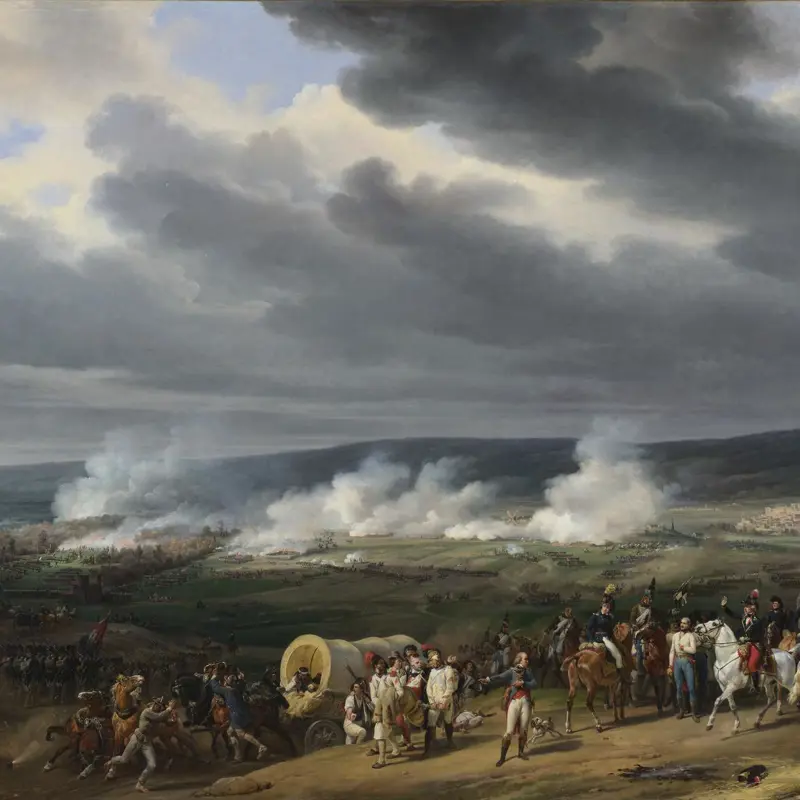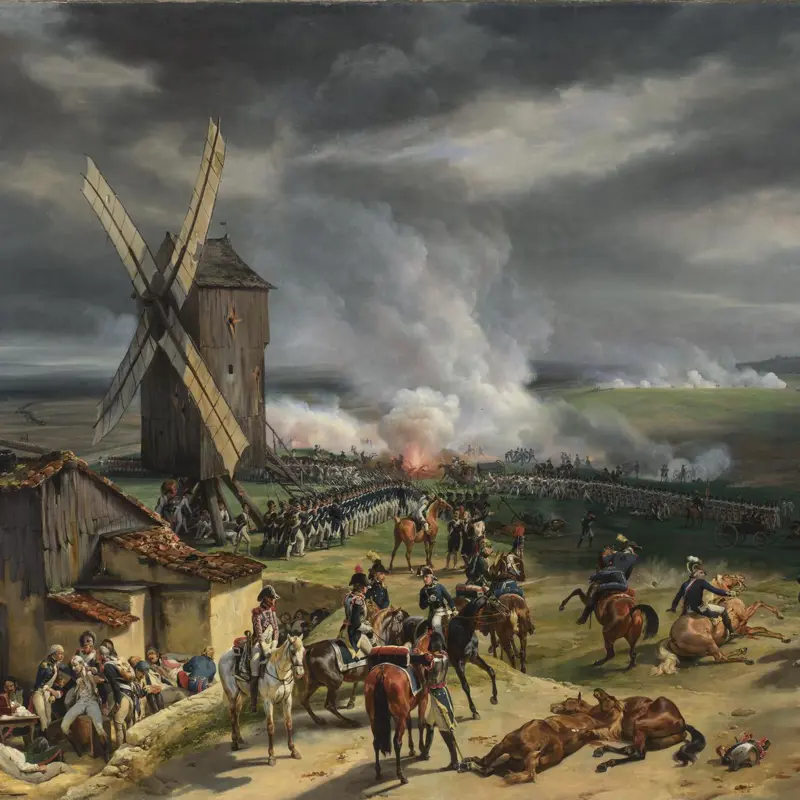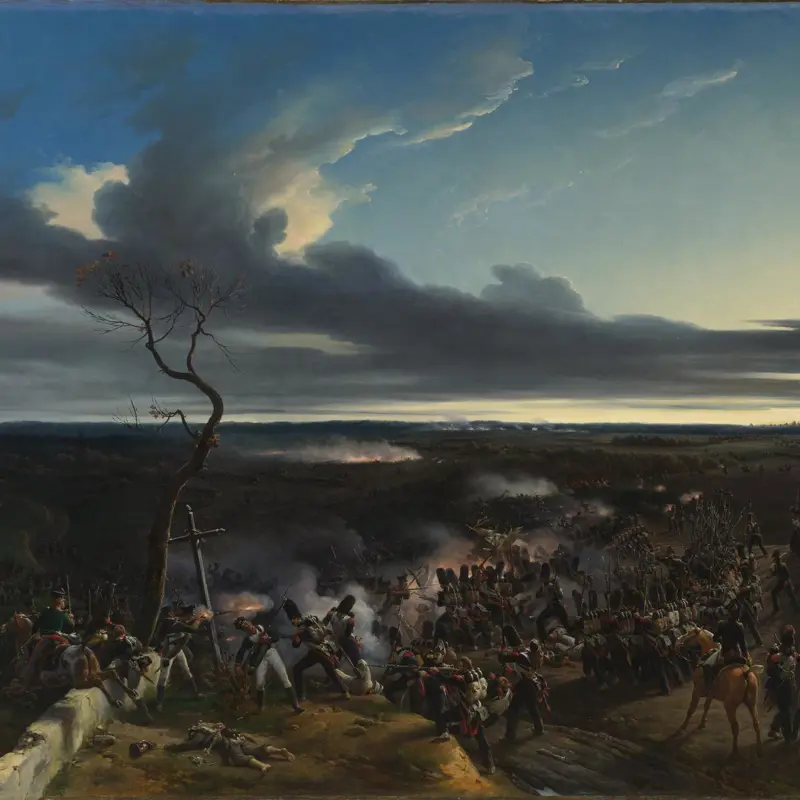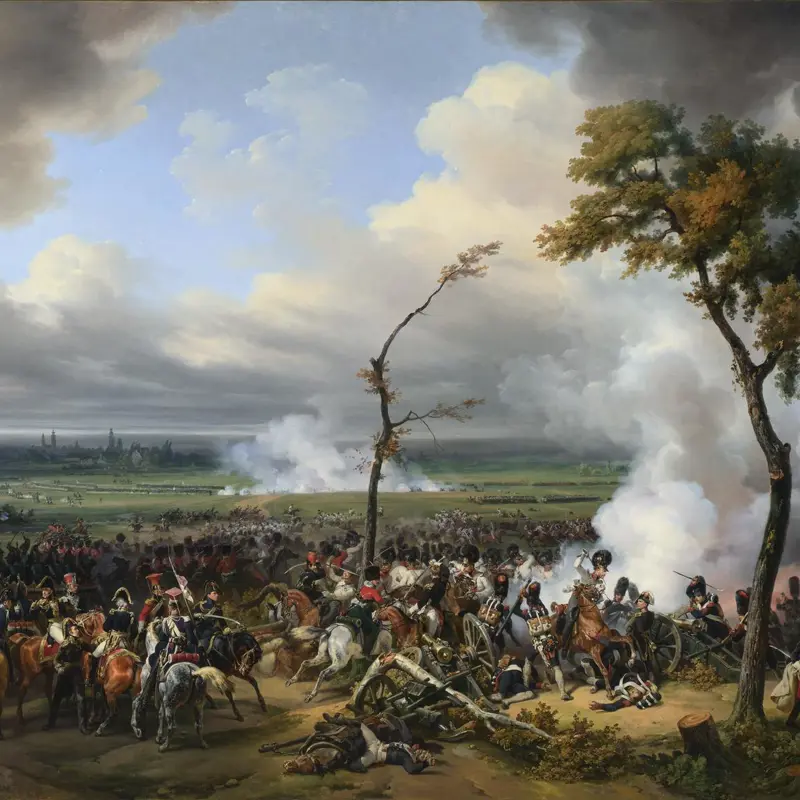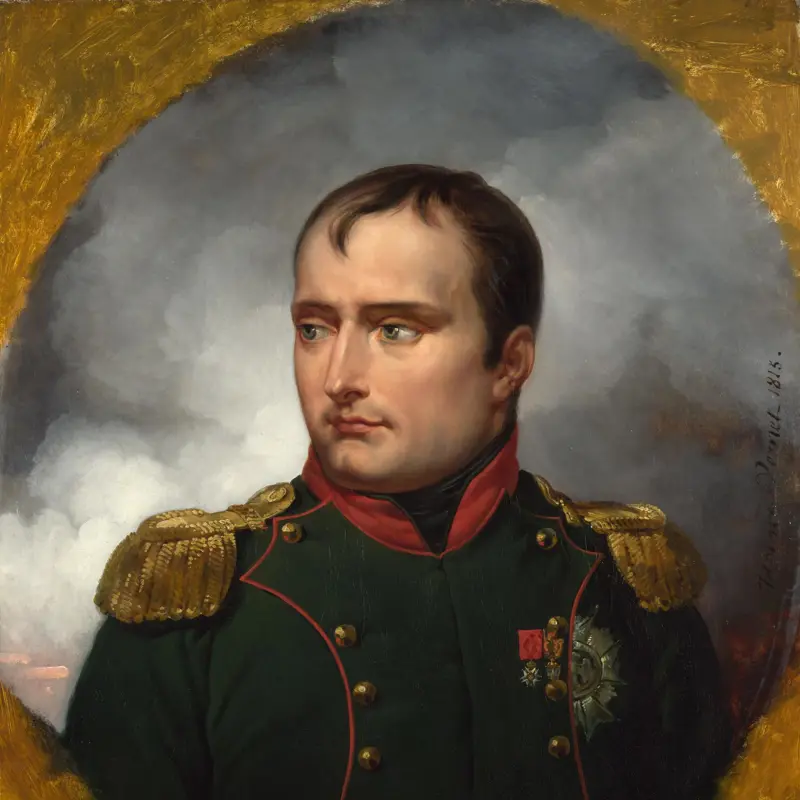Emile-Jean-Horace Vernet, 'The Battle of Montmirail', 1822
About the work
Overview
Following his defeat at the Battle of Leipzig of 1813, Napoleon and his army were forced to retreat to France. This picture shows one of Napoleon’s last military successes on French soil before his initial fall from power. On 11 February 1814 he defeated two allied forces – the Russians and the Prussians – at Montmirail, around 100 kilometres west of Paris.
Painted in 1822, this was the second of the four battle scenes commissioned from Vernet by the duc d‘Orléans. Here we see the French infantry attack the Russian forces, who flee the field. Vernet doesn’t shirk from showing soldiers being wounded or lying dead in the foreground. Instead of showing the entire battle, he emphasises the vanishing points formed by the rows of troops, which structure the composition and lead our eye to the distant horizon below which the sun is sinking. Streaks of pale yellow and pink paint hint at the weakest of sunsets just before twilight descends.
Key facts
Details
- Full title
- The Battle of Montmirail
- Artist
- Emile-Jean-Horace Vernet
- Artist dates
- 1789 - 1863
- Part of the series
- Four Battle Scenes
- Date made
- 1822
- Medium and support
- Oil on canvas
- Dimensions
- 178.4 × 290.2 cm
- Inscription summary
- Signed; Dated
- Acquisition credit
- Bequeathed by Sir John Murray Scott, 1914
- Inventory number
- NG2965
- Location
- Not on display
- Collection
- Main Collection
- Previous owners
Provenance
Additional information
Text extracted from the ‘Provenance’ section of the catalogue entry in Martin Davies, with additions and some revisions by Cecil Gould, ‘National Gallery Catalogues: French School: Early 19th Century, Impressionists, Post-Impressionists, etc.’, London 1970; for further information, see the full catalogue entry.
Exhibition history
-
2008Loan to the Pinacoteca di Brera (2008 - 2009)Pinacoteca di Brera18 June 2008 - 11 January 2009
-
2018Louis-Phillipe and VersaillesChâteau de Versailles6 October 2018 - 3 February 2019
Bibliography
-
1957Martin Davies, National Gallery Catalogues: French School, 2nd edn (revised), London 1957
-
1970Davies, Martin, and Cecil Gould, National Gallery Catalogues: French School: Early 19th Century, Impressionists, Post-Impressionists etc., London 1970
-
2001
C. Baker and T. Henry, The National Gallery: Complete Illustrated Catalogue, London 2001
About this record
If you know more about this work or have spotted an error, please contact us. Please note that exhibition histories are listed from 2009 onwards. Bibliographies may not be complete; more comprehensive information is available in the National Gallery Library.
Images
About the series: Four Battle Scenes
Overview
Following the military defeat and abdication of Napoleon in 1815, the Bourbon monarchy was restored in France. These four large battle paintings were commissioned by the duc d'Orléans (1773–1850) who had returned to France after some 21 years in exile. In 1830 he became Louis-Philippe, King of the French.
Although painted during the period of the Bourbon Restoration, all four pictures – for which Vernet was paid 38,000 francs – show French victories during the previous era of the Revolutionary and Napoleonic wars. The duke had fought with the armies of the newly established French Republic at Jemappes and at Valmy, and was keen to demonstrate his Republican sympathies. The pictures were hung in prominent positions in the Palais-Royal in Paris and functioned as propaganda celebrating French military glory and the Duke’s own career and leadership. Completed over five years, the paintings are The Battle of Jemappes (1821), The Battle of Montmirail (1822), The Battle of Hanau (1824), and The Battle of Valmy (1826). Damaged by fire in the revolution of 1848, they were restored by Vernet himself.


